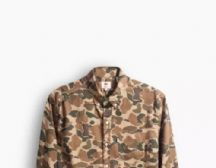Designing Camouflage Clothing: Art and Function
Camouflage clothing design is a fascinating blend of artistic creativity and practical functionality. Whether used for military purposes, outdoor activities like hunting, or as a fashion statement, camouflage patterns serve a unique role in the world of apparel design.
Camouflage patterns are more than just random shapes and colors. They are meticulously crafted designs that aim to mimic natural surroundings and disrupt the silhouette of the wearer. Designers must consider various factors:
- Color Palette: Choosing the right colors that blend seamlessly with the environment is crucial. This involves understanding the dominant hues in specific landscapes and seasons.
- Shape and Form: Patterns should break up the outline of the wearer, making it difficult for the human eye to discern a distinct shape.
- Texture: Creating depth and texture within the pattern adds realism and enhances the effectiveness of the camouflage.
- Scale: The size of the pattern elements must be appropriate for the intended environment, whether it's dense forest, arid desert, or snowy terrain.

While camouflage design is undoubtedly an art form, its primary purpose is functionality:
- Concealment: Camo patterns help individuals blend into their surroundings, providing effective concealment from potential threats or prey.
- Protection: In military applications, camouflage can be a vital part of a soldier's defense strategy, minimizing visibility and reducing the risk of detection.
- Psychological Impact: Camouflage can influence perceptions and behaviors, instilling a sense of confidence and security in the wearer.
Contemporary camouflage design extends beyond its traditional uses:
- Fashion: Camouflage patterns have found their way into mainstream fashion, appearing in highend collections and streetwear.
- Urban Camo: Designs inspired by urban landscapes, featuring grays and blacks, are popular in streetwear and casual attire.
- Adaptation: Camouflage patterns are adapted for specific environments, such as digital camo for urban settings or snow camo for winter sports.
In conclusion, designing camouflage clothing involves a careful balance of artistic ingenuity and practical considerations. It continues to evolve, reflecting trends in both fashion and functional apparel, while remaining rooted in its essential purpose of concealment and protection.

